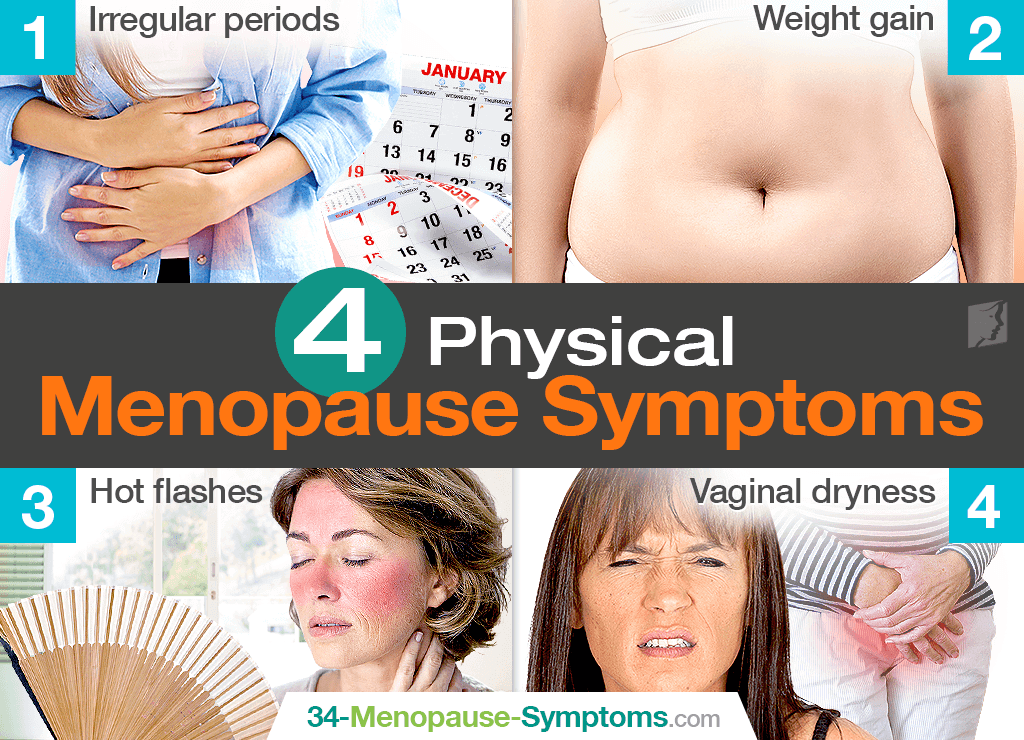Although many women tend to associate menopause only with what they see happening to them on the outside, the over 30 menopause symptoms can actually be divided into those which are physical or psychological.
Discover four common physical menopause symptoms below so that you can have increased knowledge of what is happening in your body as you transition into this new phase in life and how to deal with it.
Irregular periods
A woman is said to have reached menopause when she has gone 12 consecutive months without a menstrual cycle. Up until this time, oftentimes, one of the first physical symptoms of perimenopause is the occurrence of irregular periods.
In general, women should not be worried by irregular periods that can consist of heavier or lighter flow, skipped menses, and more. However, if accompanied by pain, it is best to see a doctor to rule out any underlying conditions.
Weight gain
As women age, it is normal for metabolism to slow down, making it all the more necessary for them to watch what they eat, cut down on calories accordingly, and partake in regular physical exercise.
Also, the sex hormone estrogen strongly influences body fat distribution, causing there to be predominant abdominal fat accumulation. This would explain why there seems to be an increase of obesity in menopausal women.
Hot flashes
By far one of the most infamous symptoms of menopause, hot flashes can leave a woman drenched in sweat and ready to jump into a walk-in freezer in a matter of seconds. Its nocturnal equivalent, night sweats, do the same, yet by awakening her just as she is trying to get some beauty rest.
Similar to the majority of others, hot flashes and night sweats are triggered by an estrogen deficiency that confuses the hypothalamus into believing it is too warm, causing subsequent sweating to cool the body down. Although psychological in beginning, their symptoms culminate physically.
Vaginal dryness
Vaginal dryness is another commonly acknowledged physical symptom of menopause. Lower levels of estrogen compromise vaginal health, seeing as the hormone is responsible for maintaining natural lubrication throughout a woman's reproductive life. As such, the onset of perimenopause may cause vaginal atrophy and make its walls thinner, weaker, and dryer, thus causing discomfort, itching, and pain during sex.
Vaginal dryness can be managed with over-the-counter moisturizers, which can be applied regularly to the vagina, and vaginal lubricants, which can be applied to the vagina before sex to reduce friction. However, in order to find permanent relief, it is necessary to treat the hormonal imbalance at fault.
How to Treat Physical Symptoms of Menopause
While each symptom of menopause has its own list of management techniques, your strife will not end until you address the root cause of hormonal imbalance.
For this, there are a variety of effective, natural menopause treatments from which to choose, revolving around the necessity to live a healthy lifestyle structured around having an improved diet, following healthy habits, and partaking in regular exercise.
More invasive treatments generally involves hormone replacement therapy (HRT) or oral contraceptives. While they bring quick relief, they may also bring even quicker side effects, especially HRT, including an increased risk of developing breast or ovarian cancer. Use them with caution and under proper supervision.
Sources
- Lizcano, F. & Guzmán, G. (2014). Estrogen Deficiency and the Origin of Obesity during Menopause. BioMed Research International, 2014, 757461. doi: 10.1155/2014/757461
- Mayo Clinic. (2017). Menopause: Symptoms & causes. Retrieved December 20, 2018, from https://www.mayoclinic.org/diseases-conditions/menopause/symptoms-causes/syc-20353397
- The North American Menopause Society. ( ). Are We There Yet? Navigate Now with Our Guided Menopause Tour. Retrieved December 20, 2018, from https://www.menopause.org/for-women/menopauseflashes/menopause-symptoms-and-treatments/are-we-there-yet-navigate-now-with-our-guided-menopause-tour




